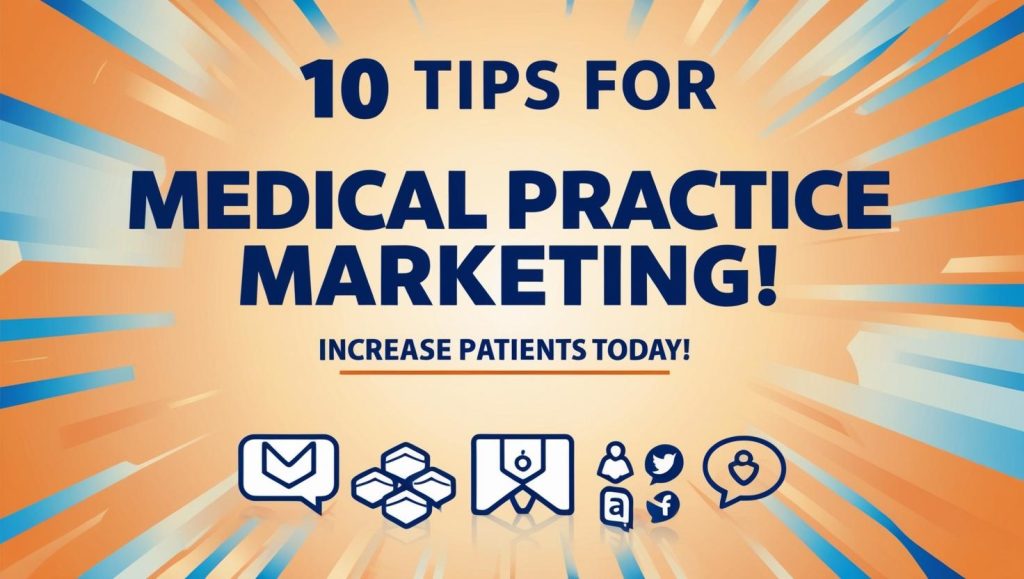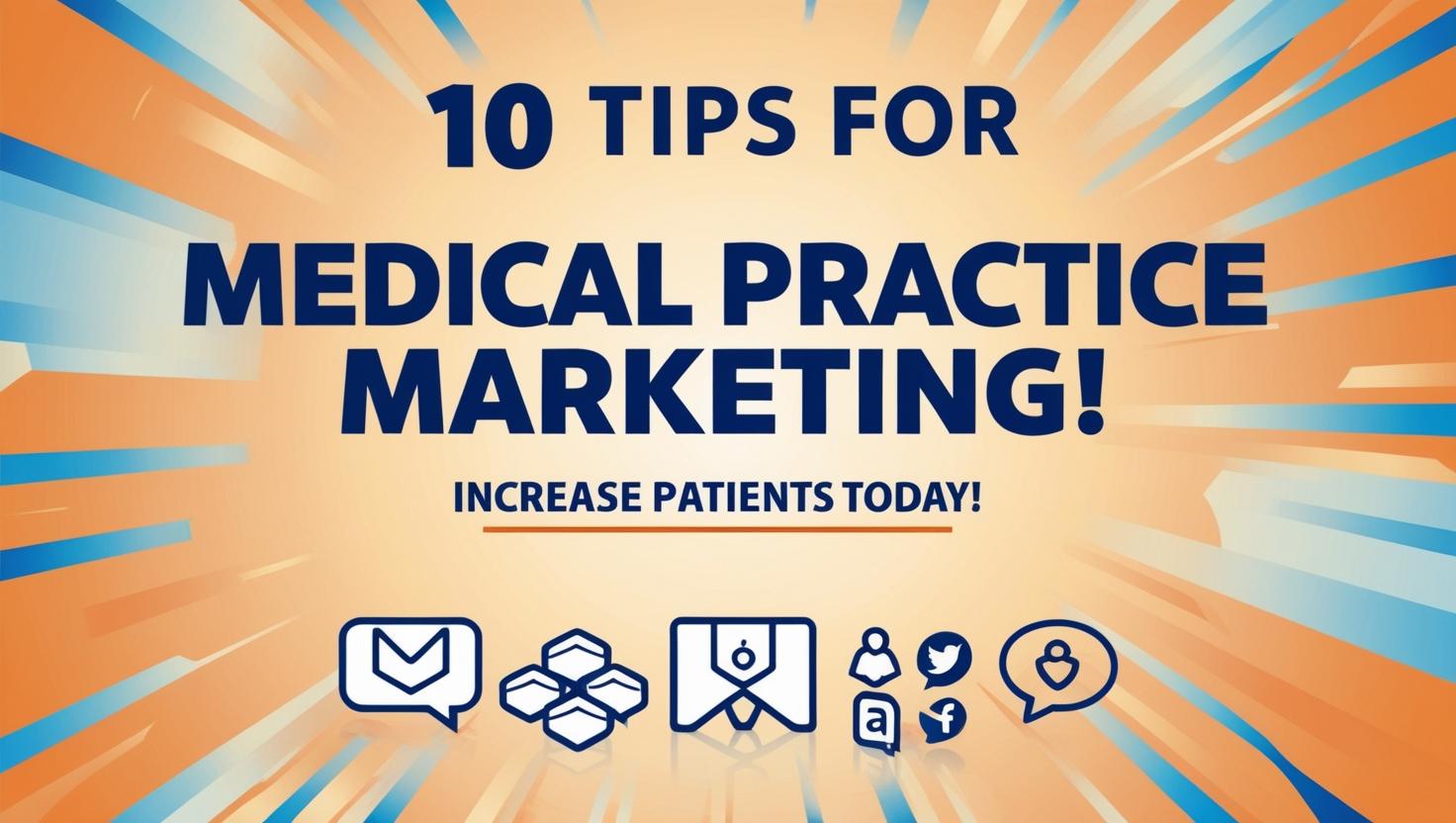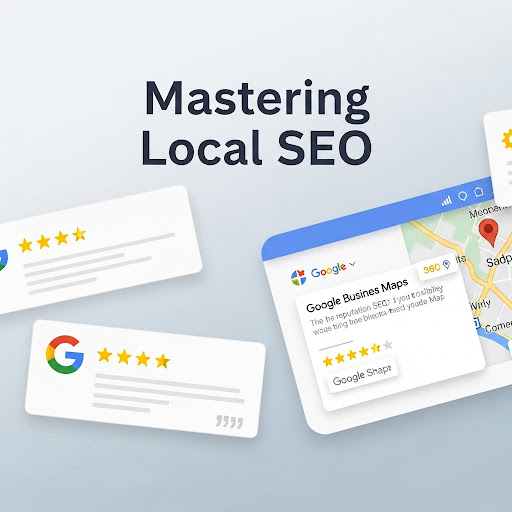10 Tips for Medical Practice Marketing: From “Meh” to “More Patients, Please!”

Okay, buckle up, future medical practice marketing gurus! We’re about to embark on a riotously fun, incredibly insightful, and surprisingly easy journey to transform your medical practice into a patient magnet. Forget the stuffy textbooks and dry webinars; we’re talking about real-world, actionable tips that will have you saying, “Why didn’t I think of that?!” faster than a nurse can find a vein.
Let’s face it, for many of you, the thought of “marketing” probably conjures images of slick-haired salespeople and budgets bigger than a small country’s GDP. But what if I told you that effective Medical Practice Marketing doesn’t have to be a headache? What if it could actually be… dare I say… enjoyable?
That’s right! We’re here to inject some much-needed humor and practicality into the often-intimidating world of Medical Practice Marketing. So, grab your favorite beverage (maybe something with caffeine, because you’ll be too excited to sleep after this), and let’s dive into the glorious realm of attracting more patients, ethically, effectively, and perhaps even with a few chuckles along the way. And remember, while attracting new patients is crucial, retaining existing patients through ongoing engagement is equally important for building a loyal and trusting patient base, making it an essential part of your overall marketing strategy.
1. Introduction to Medical Marketing: Setting the Stage for Success
In the bustling world of healthcare, medical marketing is your secret weapon to attract new patients, retain existing ones, and build a strong online presence for healthcare providers. Think of it as the heartbeat of your practice, keeping everything running smoothly and efficiently. In today’s digital age, having a well-designed website, active social media channels, and a stellar online reputation is not just a nice-to-have; it’s essential. Effective medical marketing strategies help your practice stand out from the competition, increase patient leads, and ultimately drive growth. By understanding your target audience and their needs, you can create tailored marketing efforts that resonate with potential patients and establish your practice as a trusted healthcare provider. So, let’s dive into the world of medical marketing and set the stage for your practice’s success!
2. Understanding the Healthcare Industry: Navigating the Complex Landscape
Navigating the healthcare industry can feel like trying to solve a Rubik’s Cube blindfolded. It’s a complex and ever-evolving landscape, with numerous stakeholders, regulations, and technologies shaping the market. To succeed, medical practices must stay up-to-date with industry trends, understand the needs of their patient base, and adapt to changes in the healthcare ecosystem. This means keeping an eye on the roles of healthcare professionals, insurance providers, and government agencies, as well as the impact of emerging technologies like telemedicine and artificial intelligence. By mastering this intricate dance, most practices can develop strategic medical marketing strategies that address the unique needs of their target audience and drive growth. So, put on your explorer’s hat and get ready to navigate the fascinating world of healthcare!
3. Building a Strong Online Presence: Your Digital Foundation
In today’s digital age, having a strong online presence is not just a luxury; it’s a necessity for medical practices aiming to attract new patients and grow their business. Think of your online presence as the digital handshake that welcomes potential patients to your practice.
The “Aha!” Moment: Your website is often the first impression potential patients have of your practice. A professional website isn’t just a digital business card; it’s a comprehensive introduction to your services, values, and expertise.
Specific Steps:
- Professional Website: Ensure your website is well-designed, user-friendly, and mobile-friendly. It should include essential features like a Google Business Profile, patient testimonials, and clear calls to action. These elements not only provide valuable information but also encourage patient leads and improve conversion rates.
- SEO and Local SEO: Implement digital marketing strategies such as search engine optimization (SEO) and local SEO to enhance your online visibility. This helps your practice appear in local searches, making it easier for potential patients to find you.
- Content is King: Regularly update your website with fresh, relevant content. This could be blog posts, educational articles, or video content. Not only does this improve your SEO, but it also positions your practice as a trusted authority in the healthcare field.
- Build Trust: A strong online presence builds trust and credibility with potential patients. By showcasing patient testimonials and success stories, you demonstrate the positive experiences of past patients, encouraging new patients to seek treatment at your practice.
By focusing on these elements, you can create a robust online presence that attracts more patients, builds trust, and drives patient retention.
1. Your Website: Not Just a Digital Business Card, It’s a Digital First Impression for Medical Practice Marketing!
Let’s be brutally honest: how many of you have a website that looks like it was designed in the early 2000s by your nephew’s friend who “knows computers”? Crickets. Your medical website is no longer just a place to list your address and hours. It’s often the very first interaction a potential patient has with your practice. Updating to a new website is crucial to make a good first impression and stay competitive.
The “Aha!” Moment: Most clinics focus on listing services. But what about answering patient questions before they even ask them? Think about the common anxieties patients have before a visit: parking, insurance, what to bring, how long the wait will be.
Specific Steps:
- Become a Patient Sherlock Holmes: Go through your own website as if you’re a new patient. Can you easily find what you need? Is it mobile-friendly? (Seriously, if it’s not, you’re losing patients faster than a cough in a quiet library.) A professional website ensures a user-friendly experience that retains patients.
- FAQ Superpower: Create a robust FAQ section that addresses common patient concerns. Don’t just list questions; provide clear, concise, and reassuring answers. For example, instead of just “Do you take insurance?”, try: “We accept most major insurance plans. To confirm your coverage, please call our office at [phone number] or check our handy insurance checker tool [if you have one]!”
- Meet the Team (No Awkward Headshots): Patients connect with people. Post friendly, professional photos of your staff, maybe even with a fun fact or two about them. This builds trust and humanizes your practice. Think less “passport photo,” more “friendly neighbor.”
- Online Scheduling (If You Dare!): If your practice can swing it, online scheduling is a game-changer. It caters to the “I want it now!” generation and reduces phone tag. Just make sure your system is as user-friendly as ordering pizza.
2. Google My Business: Your Digital Front Door, Wide Open and Welcoming!
If your Google Business Profile (GBP) isn’t optimized, you’re essentially putting up a “Closed for Business” sign on the internet, even if your doors are wide open. This is paramount for local Medical Practice Marketing.
The “Aha!” Moment: Did you know that an optimized Google Business Profile can significantly impact your local search ranking, even more than your website in some cases, by appearing at the top of Google search results? Plus, reviews on GBP are gold. Pure, unadulterated marketing gold.
Specific Steps:
- Claim and Verify (Like You’re Finding Buried Treasure): If you haven’t claimed your GBP profile, do it yesterday! Verify it through the mail or phone. This is non-negotiable.
- Fill It Out Like a Tax Return (But More Fun): Complete every single section. Hours, services, photos (high-quality ones!), a compelling description, and your precise address. Think of it as your digital resume for prospective patients.
- Photos, Glorious Photos: Showcase your waiting room, examination rooms (tidy ones, please!), and staff. Patients want to see where they’re going and who they’ll be interacting with.
- Embrace the Review: The Good, the Bad, and the Hilarious: Encourage patients to leave reviews. Respond to every single one, good or bad. For positive reviews, say thank you! For negative ones, respond professionally, empathetically, and offer to take the conversation offline. Remember, a well-handled negative review can actually build trust. “We appreciate your feedback and are truly sorry you had this experience. Please call us at [phone number] so we can address your concerns directly.” This shows you care, which is a HUGE part of good Medical Practice Marketing.
- Post Updates (Like Mini Blog Posts): GBP allows you to post updates about your practice – new services, holiday hours, health tips, even a funny anecdote. Use it! It keeps your profile fresh and shows Google you’re active.
Optimizing your local listings is crucial for local SEO, as it enhances your search visibility and attracts more local patients.
3. Content Medical Practice Marketing: Becoming the Wise Oracle of Health (Without the Toga)
“Content marketing” sounds fancy, but it just means sharing valuable information with your audience. Think of yourself as the friendly neighborhood health expert, providing helpful insights. This is a crucial element of modern Medical Practice Marketing. When you create content, such as blog posts, videos, and infographics, you provide educational materials that inform potential patients and generate new patient leads, establishing your practice’s authority in the healthcare field.
The “Aha!” Moment: Patients aren’t just looking for a doctor; they’re looking for answers and reassurance. When you provide valuable information through content creation, you build trust and establish yourself as an authority, even before they step foot in your office.
Specific Steps:
- Blog, Blog, Blog (Even if It’s Just a Little Bit): Start a blog on your website. Write about common health concerns, preventative tips, new treatments, or even debunk health myths. Keep it simple, accessible, and relatable. “5 Ways to Beat the Common Cold Without Feeling Like a Zombie” is way more engaging than “A Comprehensive Review of Rhinovirus Pathophysiology.”
- Video Killed the Radio Star, and It’s Rocking Healthcare: Short, informative videos are incredibly powerful. A quick video demonstrating how to properly wash hands, explaining a common procedure, or introducing your staff can be hugely impactful. Host them on YouTube and embed them on your website.
- Social Media Smarts (Not Just Cat Videos): Use platforms like Facebook, Instagram, or even TikTok (if you’re brave and creative!) to share your content. Don’t just post articles; engage with your audience. Ask questions, run polls, and share behind-the-scenes glimpses (appropriately, of course!).
- The Power of the Patient Story (with Consent!): With proper consent, a well-told patient success story can be incredibly powerful. Focus on the transformation and the human element. “How Sarah Overcame Her Chronic Back Pain Thanks to Our Innovative Therapy” is far more compelling than “We Offer Physical Therapy Services.”

6. Video Marketing and Patient Testimonials: Bringing Stories to Life
Lights, camera, action! Video marketing and patient testimonials are like the blockbuster hits of medical marketing. They allow you to showcase your services, build trust with potential patients through patient reviews, and establish your practice as a trusted healthcare provider. By sharing success stories, patient testimonials, and educational content, you can create an emotional connection with your target audience and drive conversion rates through the roof. Imagine a heartfelt video of a patient sharing their journey to recovery, or a quick tutorial on managing a common health issue – these are the stories that resonate. Use video content across multiple channels, including social media, your website, and paid ads, to reach a wider audience and increase patient engagement. By leveraging video medical marketing and patient testimonials, you can differentiate yourself from other medical practices and establish a strong online presence. Ready to roll the credits on your marketing success?
4. Referral Medical Practice Marketing: Nurturing Your Network (Think of It as Doctor-to-Doctor Dating)
Referrals are the lifeblood of many medical practices. But are you actively nurturing those relationships, or just hoping for the best? Strategic Medical Practice Marketing involves cultivating these connections to drive practice growth.
The “Aha!” Moment: Your referring providers are your partners in patient care, and nurturing these relationships is crucial for patient growth. Treating them as such, and making their lives easier, will encourage more referrals. And here’s a secret weapon: Many practices overlook the treasure trove of information available for free to identify potential referrers, which can significantly contribute to overall practice growth.
Specific Steps:
- The Thank You (More Than Just a Hallmark Card): Send personalized thank-you notes or emails to referring providers for every patient they send your way. A quick, genuine thank you goes a long way.
- Provide Timely Updates (Don’t Leave Them Hanging): When you see a referred patient, send the referring provider a brief update on their progress. This shows you’re a responsible and communicative partner.
- Host a “Lunch and Learn” (With Actual Learning, Not Just Lunch): Offer to host a lunch and learn session at a referring provider’s office, covering a topic relevant to their practice. This is a fantastic way to build relationships and showcase your expertise.
- Strategic Targeting with NPI Lookup (Your Secret Weapon!): This is where it gets juicy. You can use the free NPPS NPI lookup page (National Plan and Provider Enumeration System) to find contact information for referring providers in your area. Want to target all the family doctors within a 10-mile radius? NPI lookup! This is a low-cost, high-impact way to create a targeted list for outreach. You can then use this list to send introduction letters, invite them to events, or even just send a friendly “hello” to start building a relationship. This proactive approach to Medical Practice Marketing is often overlooked.
- Networking Events (Not Just Awkward Small Talk): Attend local medical association meetings, hospital events, and other networking opportunities. Be genuinely interested in connecting with other providers.
5. Patient Experience: Making Them Feel Like VIPs (Very Important Patients)
This isn’t strictly “marketing,” but it’s the foundation upon which all good Medical Practice Marketing is built. A fantastic patient experience leads to word-of-mouth referrals, which are the holy grail of marketing. Generating and managing patient inquiries is crucial, as it helps in understanding patient needs and improving service quality.
The “Aha!” Moment: Every interaction a patient has with your medical clinic, from the first phone call to the follow-up, shapes their perception. Even seemingly small things can leave a lasting impression.
Specific Steps:
- The Friendly Voice (It All Starts Here): Train your front desk staff to be friendly, empathetic, and efficient. They are the gatekeepers and the first point of contact. A rude or unhelpful front desk can sink your Medical Practice Marketing efforts faster than a stone in a pond. Tracking and responding to phone calls effectively is essential for patient engagement.
- Reduce Wait Times (Because No One Likes to Wait): This is a tough one, but strive to minimize wait times. If there is a delay, communicate it clearly and apologetically. Offer amenities in the waiting room – comfortable chairs, Wi-Fi, magazines (current ones!), and maybe even a puzzle or two.
- Clear Communication (No Medical Jargon, Please): Explain diagnoses and treatment plans in plain, understandable language. Encourage questions. Use visual aids if helpful.
- Follow-Up is Key (Show You Care): A quick follow-up call or email after a visit to check in on the patient’s progress or answer any lingering questions can make a huge difference.
- Solicit Feedback (And Act On It): Implement a simple patient satisfaction survey. Ask for honest feedback and use it to improve your services. Show your patients that their opinions matter.
6. Branding: More Than Just a Logo, It’s Your Practice’s Personality
Your brand is the sum total of how people perceive your practice. It’s your personality, your values, and what makes you unique. Strong branding is essential for effective Medical Practice Marketing and should be aligned with strategic marketing initiatives. Highlighting your healthcare services is crucial to attract and retain patients by showcasing what your practice offers.
The “Aha!” Moment: Your brand should evoke trust, compassion, and professionalism. It’s not just about pretty colors and a catchy slogan; it’s about consistently delivering on your promise.
Specific Steps:
- Define Your “Why”: What’s the core purpose of your practice? What sets you apart? Is it your compassionate care, your cutting-edge technology, your focus on preventative health? Articulate this clearly.
- Consistency is King (or Queen): Ensure your branding is consistent across all touchpoints – your website, social media, signage, even your office decor. Everything should convey the same message and feeling.
- Professional Photography (No iPhone Selfies!): Invest in professional photos of your office and staff. High-quality visuals elevate your brand.
- Your Unique Value Proposition: What makes your practice the best choice? Is it same-day appointments? A holistic approach? Specialized expertise? Clearly communicate your unique selling points in all your Medical Practice Marketing materials.
11. Medical Practice Online Reputation: Building Trust and Credibility
In the world of medical practice marketing, your online reputation is your calling card. It’s what potential patients see when they search for your practice, and it plays a crucial role in building trust and credibility.
The “Aha!” Moment: Online reviews and patient testimonials are the modern-day word of mouth. They can make or break a potential patient’s decision to choose your practice.
Specific Steps:
- Encourage Reviews: Actively encourage your patients to leave reviews on platforms like Google, Yelp, and healthcare-specific review sites. Positive reviews can significantly enhance your online reputation.
- Respond to Reviews: Reputation management is key. Monitor your online reviews and respond to them promptly. Thank patients for positive reviews and address any negative feedback professionally and empathetically. This shows that you value patient feedback and are committed to improving their experience.
- Showcase Testimonials: Highlight patient testimonials on your website and social media channels. These success stories can reassure potential patients and build trust in your practice.
- Monitor Your Online Presence: Regularly check your online presence to ensure that your information is accurate and up-to-date. This includes your Google Business Profile, social media profiles, and any other online listings.
By managing your online reputation effectively, you can stand out from other medical practices, attract more patients, and drive overall practice growth.
7. Email Marketing: The Power of the Inbox (Without Being Annoying)
Email marketing, when done right, is a powerful tool for patient engagement and retention, offering a high return on your advertising dollars. It’s about building a relationship, not just sending out spam. This is a direct and cost-effective channel for Medical Practice Marketing.
The “Aha!” Moment: Patients often forget routine check-ups or new services. A well-timed, informative email or text message can be a gentle reminder and a valuable source of information.
Specific Steps:
- Build Your List (Ethically!): Collect patient email addresses with their explicit consent. Offer a compelling reason to sign up, like a free health guide or exclusive content.
- Segment Your List (Don’t Send Everything to Everyone): If you have different patient demographics or specialties, segment your email list. Send targeted content that’s relevant to each group.
- Provide Value (No Sales Pitches): Your emails should be informative, helpful, and engaging. Share health tips, news about your practice, upcoming events, or even patient testimonials.
- Personalize (A Little Effort Goes a Long Way): Use the patient’s name in the email. This simple touch makes the email feel more personal.
- Keep It Short and Sweet: People are busy. Get to the point quickly and make it easy to read.
- Call to Action (What Do You Want Them to Do?): Always include a clear call to action – “Schedule your annual physical,” “Read our latest blog post,” “Learn more about this new service.”
8. Local Partnerships: Beyond Referrals, Think Community!
Medical Practice Marketing doesn’t just happen online. Look for opportunities to partner with other local businesses and organizations. Community involvement is crucial; engaging with local populations through health fairs, sponsorships, and events not only raises awareness of your medical practice but also fosters trust and strengthens connections within the community.
The “Aha!” Moment: Being an active part of your community builds goodwill and can lead to unexpected patient referrals, with the right marketing support.
Specific Steps:
- Local Businesses (Think Synergistic!): Partner with local gyms, health food stores, pharmacies, or even schools. Offer workshops, health screenings, or cross-promotional discounts.
- Community Events (Be Present!): Sponsor a local sports team, participate in health fairs, or host a booth at a community festival. Hand out useful branded items like pens, small hand sanitizers, or stress balls.
- Educational Workshops (Share Your Knowledge): Offer free workshops on common health topics to community groups, schools, or senior centers. This positions you as an expert and builds trust.
- Support Local Charities (Give Back!): Partner with a local charity or non-profit organization. This demonstrates your commitment to the community and enhances your practice’s reputation.
12. Market Research and Analysis: The Foundation of Informed Decisions
Think of market research and analysis as your practice’s GPS, guiding you to informed decisions and successful outcomes. These essential components of any medical marketing strategy provide valuable insights into your target audience, market trends, and competitor activity. By conducting thorough market research, you can identify areas for growth, understand patient needs, and develop targeted marketing efforts that resonate with your audience. This includes analyzing key metrics like website traffic, ad spend, and patient retention, as well as optimizing ad placements to maximize ROI and monitoring online reviews and social media channels to stay informed about patient sentiment. With data-driven insights, you can optimize your marketing strategies, reduce waste, and drive more patients to your practice. So, grab your magnifying glass and start uncovering the secrets to your practice’s success!
9. Optimize for Voice Search: “Hey Google, Find Me a Doctor Near Me!”
More and more people are using voice assistants to find local businesses, including medical practices. If you’re not optimizing for voice search, you’re missing out on a growing segment of potential patients. Appearing in voice search results is crucial for capturing this audience. This is the future of Medical Practice Marketing.
The “Aha!” Moment: Voice searches are typically longer, more conversational, and often ask questions. Your content needs to reflect this.
Specific Steps:
- Think Like a Conversationalist: How would a patient ask a question about your services using voice? “What are the hours for Dr. Smith’s office today?” “Where is the nearest urgent care?” Incorporate these natural language phrases into your website content and GMB profile.
- Focus on Local Keywords: Make sure your GMB profile and website clearly state your location and the services you offer in that area.
- Answer “Who, What, When, Where, Why, How” Questions: Voice searchers often use these question words. Structure your content to directly answer these types of queries.
- Optimize for “Near Me” Searches: Ensure your GMB profile is accurate and complete, as this is crucial for “near me” searches.
10. Embrace Analytics: Data is Your Compass, Not Just Numbers
You’ve heard the saying “what gets measured gets managed.” When it comes to Medical Marketing, this couldn’t be truer. For SEO purposes, understanding and utilizing data-driven optimization is crucial. Don’t just throw spaghetti at the wall and hope it sticks!
The “Aha!” Moment: Understanding your marketing data allows you to see what’s working, what’s not, and where to invest your precious time and resources, especially when it comes to your medical website.
Specific Steps:
- Google Analytics (Your Website’s Report Card): Install Google Analytics on your website. Learn how to track website traffic, where your visitors are coming from, and what pages they’re viewing. This provides invaluable insights into your online Medical Practice Marketing efforts.
- Google My Business Insights (Right There, For Free!): GMB provides insights into how people are finding your listing, how many calls you’re receiving, and how many website visits are coming from your profile. Check these regularly!
- Track Your Referrals (From Where and From Whom): Implement a system to track where your new patients are coming from. Is it online searches? Referrals from specific doctors? Word of mouth? This data will inform your future Medical Practice Marketing strategy.
- A/B Test Your Marketing (A Little Experimentation is Good): Try different headlines for your blog posts, different calls to action in your emails, or different images on your social media. See which ones perform better.
- Don’t Be Afraid to Adjust: If something isn’t working, don’t keep doing it! Use your data to pivot and refine your Medical Practice Marketing strategies. It’s a continuous learning process.
There you have it! Ten tips for making your Medical Practice Marketing less of a chore and more of a triumph. Remember, the goal isn’t to be a slick salesperson; it’s to be a trusted resource and a compassionate provider who is easily found by those who need you most. So go forth, implement these tips, and watch your practice thrive! And hey, if you get a little bit of a chuckle along the way, that’s just a bonus. Now, go forth and market like the healthcare rockstar you are!
17. Leveraging Technology for Marketing: Innovate and Elevate
In the competitive healthcare industry, leveraging technology is essential for innovating and elevating your marketing efforts. It’s not just about keeping up with the Joneses; it’s about staying ahead of the curve.
The “Aha!” Moment: Technology can transform your marketing efforts from good to great, helping you reach target patients more effectively and efficiently.
Specific Steps:
- Digital Marketing Strategies: Utilize digital marketing strategies such as programmatic advertising and remarketing campaigns. These techniques allow you to target patients across multiple channels, improving your online presence and engagement.
- Content Creation: Leverage technology to create engaging content, including video content and educational materials. This not only helps in building trust and credibility but also keeps your audience informed and engaged.
- Track Key Metrics: Use tools to track key metrics like website traffic, ad spend, and conversion rates. Analyzing this data helps you optimize your marketing efforts and improve your return on investment (ROI).
- Streamline Marketing Efforts: Technology can help streamline your marketing efforts, making them more efficient and effective. From automated email campaigns to social media scheduling tools, there are numerous ways to enhance your marketing strategy.
By embracing technology, you can improve patient engagement, drive more growth, and achieve greater success in the competitive healthcare market.
There you have it! These new sections should seamlessly integrate into the existing article, providing valuable insights while maintaining the same engaging and practical tone. Now, go forth and market like the healthcare rockstar you are!
15. Staying Up-to-Date with Industry Trends: Keeping Your Finger on the Pulse
In the fast-paced world of healthcare, staying up-to-date with industry trends is like having a crystal ball that helps you see the future for your medical practice. It allows you to adapt to changes in the healthcare ecosystem, leverage new technologies, and stay ahead of the competition. This means keeping an eye on developments in digital marketing, practice management, and healthcare technology, as well as attending industry events, conferences, and workshops. By staying informed about the latest trends and best practices, you can refine your marketing strategies, improve patient engagement, and drive growth. Whether it’s leveraging programmatic advertising, optimizing Google Ads, or creating educational content, staying agile and responsive to changes in the market is key to success. So, keep your finger on the pulse and watch your practice thrive in the ever-evolving healthcare industry!





